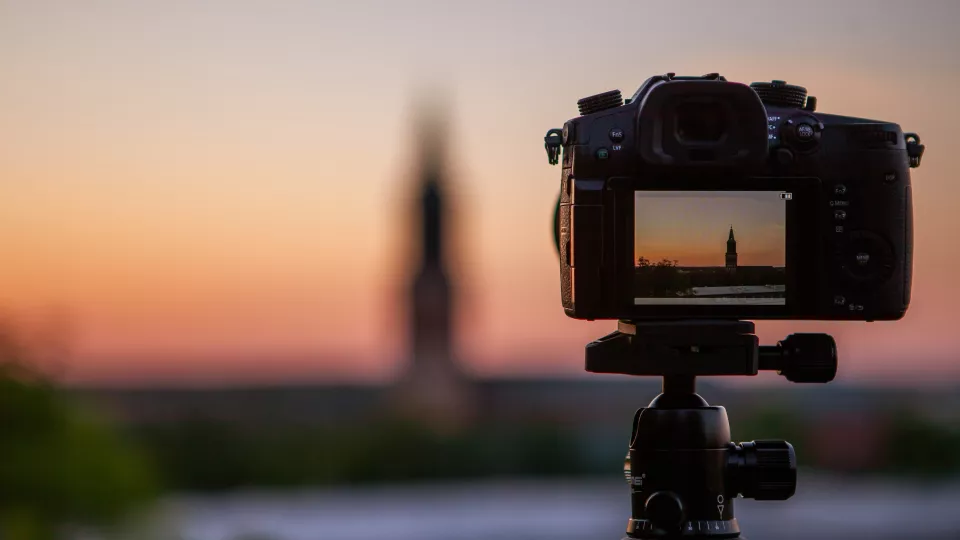We have used Zoom monitoring in a couple of exams both to prevent students from collaborating during the exam and also to ensure that it is easier for students who might be having issues submitting the exam. When we have the students present in Zoom, it is easier to know if the student is late with their submission because they have technical problems or if they are late because they are working on their answers longer than allowed.
Half an hour before
Half an hour before the exam starts students should be logged in to zoom with two devices, both of which should have the camera turned on. One camera should show the student from the front and the other from behind so that the students workplace and computer screen are visible. In the instructions given to the students, we have a picture of how they could set up their phone to have a suitable height and angle of the rear camera.
Students log in and enter breakout rooms
When students log in to Zoom for the exam, they have been asked to have both their first and last name displayed on both devices and then they are divided into breakout rooms where they will show their ID. We have had about 15 students in each room with an exam guard. They then have to show their ID and be checked off. We are considering making more breakout rooms so that the students can be alone or at most two at a time with an exam guard when they show their ID and then the exam guard can switch between the breakout rooms instead. Since this part of the exam supervision is more work intensive than the supervision during the actual exam; we have also received help from PhD students who have also been working as teachers assistants on the courses.
The exam starts – all students are in the main room
When the exam starts, the breakout rooms are closed and all students are in the main room. The students should have a microphone turned on with one of the devices, but also have turned their sound off (speakers) so that they are not disturbed by other students coughing, mumbling, etc. Instructions to the students have been that they must watch the chat after half an hour and then again in an hour if the exam guards need to contact them. Since the students have their sound muted, the exam guards cannot contact them by talking to them, instead only via the chat. Thus, it is also important to point out to the students that it is their responsibility to keep track of the finishing time for the exam.
Invigilators during the exam
During the exam, the exam guards go around among the students and look at them. We have roughly estimated that we need one exam guard for every 20-25 students. For large exams, there will be a lot to keep track of considering students will be logged in to two devices, so an alternative then is that each exam guard has their own breakout room with 20-25 students during the entire exam period. This will make it a little clearer and easier to keep track of the students. If students need to go to the toilet, they will write to one of the exam guards in the chat who will give them permission to leave. The chat is also configured to that the students can only chat with the “Host”.
Our exams – no aids allowed
We have only tested zoom monitoring for handwritten exams, but both for exams with and without permitted aids (course materials). Since it is difficult to keep track of what is happening on the students’ computer screens, our opinion is that the risk of cheating is greatly reduced during exams where no materials or other aids are allowed.
Student photographs and submit in Canvas
When the students have finished their exam, they write to an exam guard in the chat who gives them permission to photograph their answers using one of their cameras. The student then has 15 minutes to take the photos and then upload their exam to Canvas. Once this is done, the student can leave the Zoom meeting.
This article was first published during the pandemic and has since been adjusted and updated to fit the post-pandemic situation.


